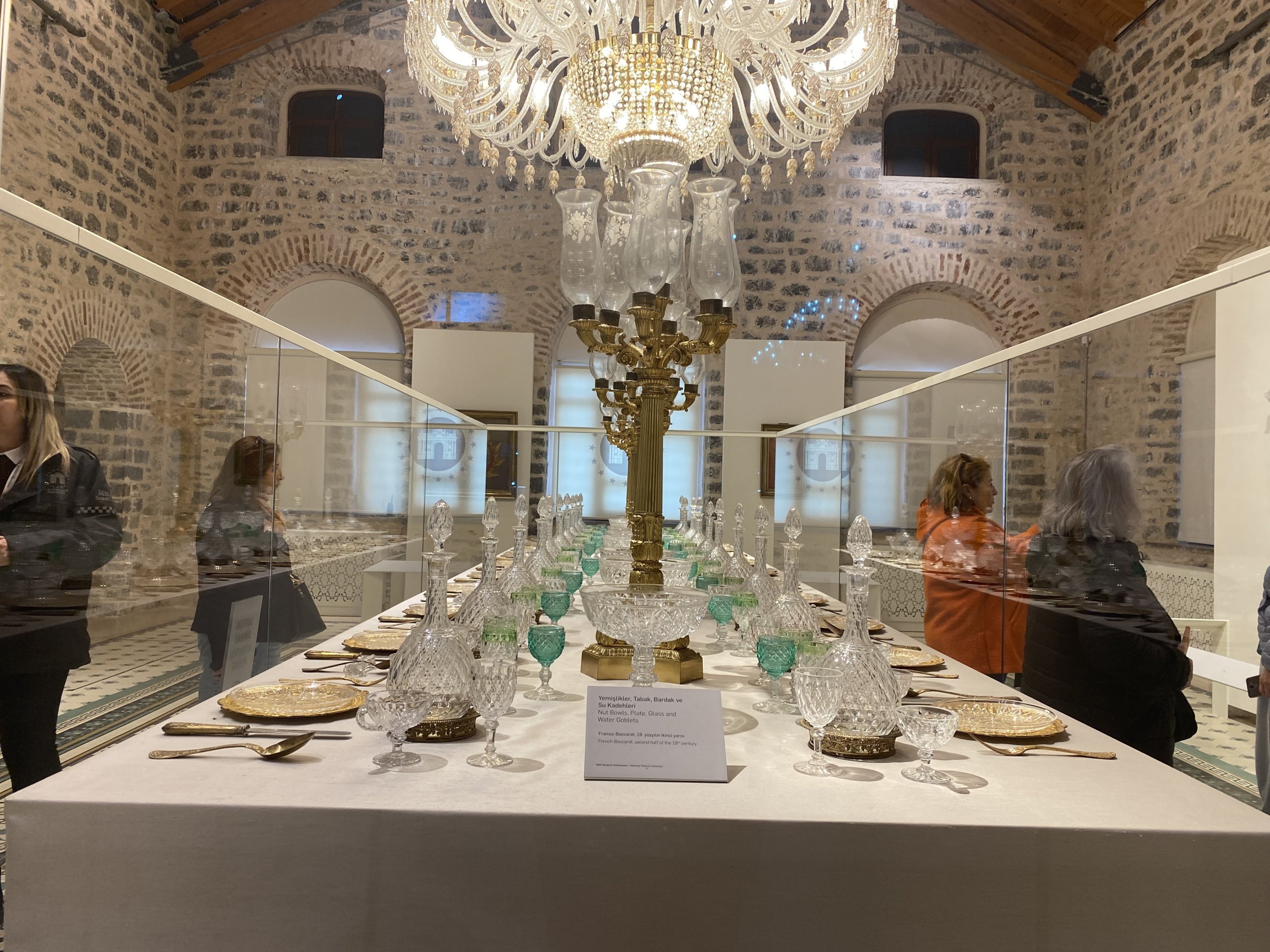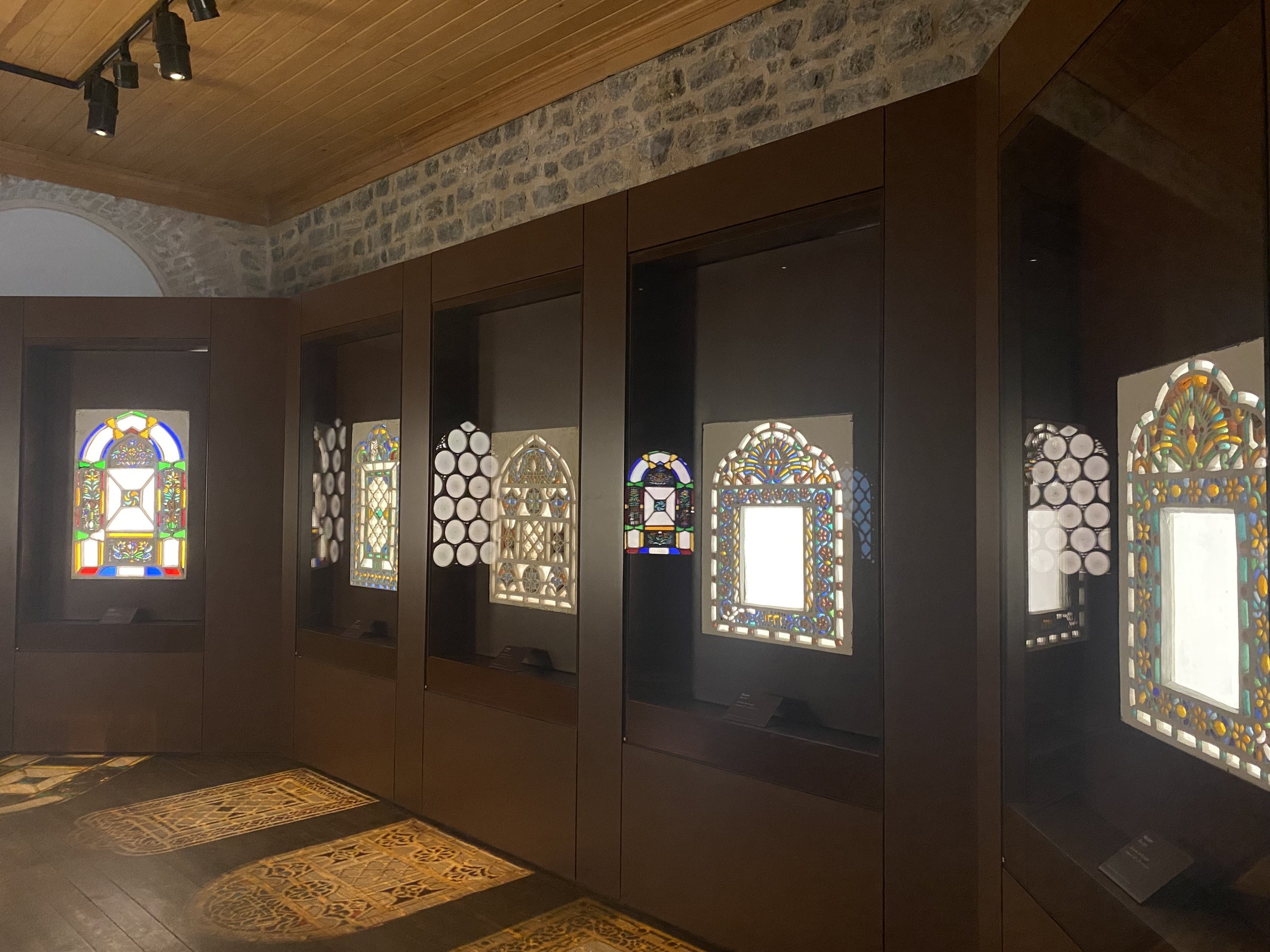© Turkuvaz Haberleşme ve Yayıncılık 2024
Nestled within the restored former stables of Abraham Pasha Grove, the Beykoz Glass and Crystal Museum, opened by the Directorate of National Palaces, showcases the world's only Mamluk lamp. It is a masterpiece unrivaled in its uniqueness and, alongside an array of Turkish glassware, draws thousands of daily visitors.
Providing information about the lamps in the museum, Akile Çelik, the head of the directorate's Palaces, Mansions and Pavilions Department for the city's Anatolian side, stated: "After every victory won by the Ottoman state against the West, Mamluk rulers adopted the tradition of sending gifts to the Ottoman ruler. The lamp, in the shape of a goblet, which belongs to the Mamluks, is unique due to its form. No other example like this has ever been found in the world."
Moreover, visitors are showing intense interest in the 700-year-old lamp sent by Mamluk ruler An-Nasir Hasan to Orhan Ghazi, the second sultan of the Ottoman Empire after the conquest of Gallipoli.
The Beykoz Glass and Crystal Museum takes its name from the Beykoz Glass and Crystal Factory, which was the most important glass factory of its period established in this neighborhood during the Ottoman era. The historic building of the museum was constructed by Abraham Pasha, who was the gatekeeper of Egypt's Khedive Ismail Pasha and was raised to the rank of vizier by Sultan Abdulaziz.

In the 19th century, Abraham Pasha had mansions, pavilions, pools, a theater building and a stable built on his land. The remaining stable building from the mentioned structures was restored by the Directorate of National Palaces and converted into a museum. In this stone building with U-shaped architectural features from the 19th century, the collection of the Beykoz Glass and Crystal Museum includes not only Turkish glasses but also works produced for Ottoman palaces in Europe.
"The historical building of our museum consists of a farmhouse built by Abraham Pasha. Abraham Pasha was an Ottoman statesman who rose to the rank of 'vizier' during the reign of Sultan Abdulaziz. He built farmhouse buildings on vast lands in the Beykoz and Sarıyer regions. He is a historical figure who lived in this region. Later, these areas were purchased from him during the reign of Sultan Abdulhamid and made public. They were turned into a national garden. Later on, during the Republican era, this area was used as a nursery. After the nursery period, it was transferred to our institution. Then it underwent a serious restoration process. It was opened to the public in April 2021," she said.
Expressing satisfaction with the visitor density at the Beykoz Glass and Crystal Museum, Akile Çelik said: "Inside our museum, the most valuable and beautiful glass works belonging to the national palaces are exhibited. In addition to these, older works that are very important in glass art are borrowed from other museums and exhibited, ensuring thematic integrity. In the first section of the museum, 'tools related to glass' are exhibited, and 'how glass is made' is explained. In the following sections, works belonging to the 13th and 14th centuries such as the Kubadabad plate and Mamluk lamps are mostly exhibited. In the next section, there are works from the 16th century, including 'revzen' (stained glass), along with 'humbaras' (metal bowls to restore money), glass bracelets and works called 'surname glasses' extracted from the Marmara-Sirkeci excavations."
"We have glass works used in Ottoman kitchens in the 19th century. Our pitchers with snowflake patterns attract the attention of even our young visitors. There are also glassworks specially made for sultans by the most famous factories in Europe. In 2023, 150,000 people visited our museum. Especially on weekends, our visitors show intense interest. After visiting the museum, we have a glass workshop that everyone can attend. We have a garden with 117 types of trees. The animals in our garden, peacocks and rabbits, attract the attention of children," she elaborated.

Stating that one of the most valuable pieces in the museum is the Mamluk lamp, Çelik said: "After every victory of the Ottoman Empire against the West, Mamluk rulers adopted the tradition of sending gifts to the Ottoman ruler. This lamp here is one of those gifts. It was presented to Orhan Gazi by the Mamluk ruler after the conquest of Gallipoli. This artifact, gifted to Orhan Gazi by Mamluk Sultan Hasan Nasiruddin, bears valuable inscriptions."
The lamp is adorned with verses from the Nur Surah, including the 35th verse. At its neck, the words: "Allah is the Light of the heavens and the earth. Allah's is like a niche in which there is a lamp, the lamp is in a crystal, the crystal is like a shining star, lit from the oil of a blessed olive tree, located neither to the east nor the west, whose oil would almost glow, even without being touched by fire."
The Mamluk lamp, crafted using the free-blowing technique and adorned with gilding and enamel, stands out for its distinctive goblet-like shape. Unparalleled in the world, no other example of its kind has been discovered. Its body and stem were fashioned as one unit, with the foot added at a later stage. Its significance lies not only in its unique form but also in the meticulous craftsmanship employed in its creation. This lamp, originating from the Mamluk era, holds a place in the esteemed collection of the Topkapı Palace.
